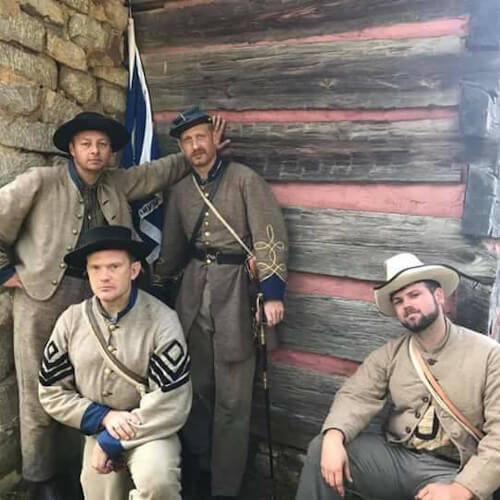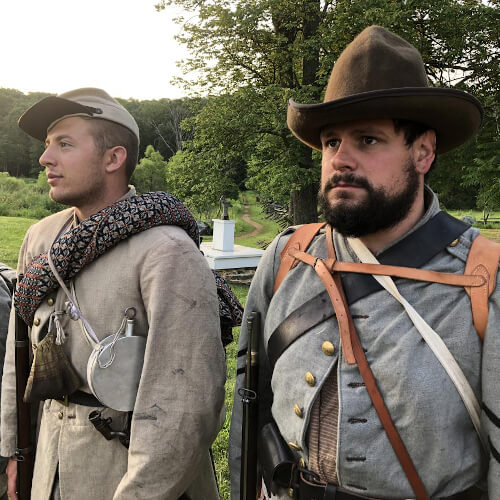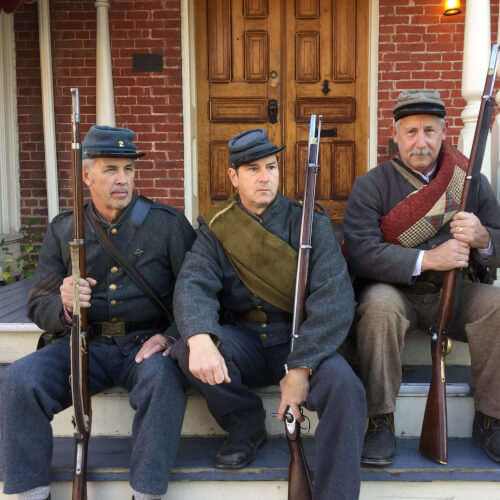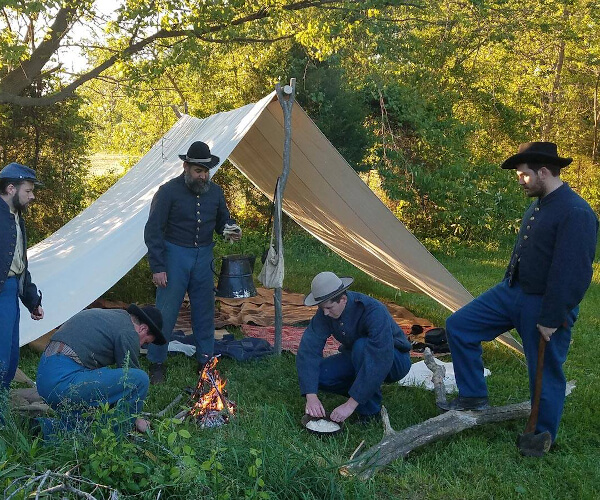Civil War Soldiers
Learning About The Common Soldier of the Civil WarThe Common Confederate Soldier
The Civil War saw men from all walks of life take up arms to fight for the Union. For many, leaving home to join the military would be the first time they had been more than a few miles from home. These new recruits would soon learn the hardships and monotony of military life. They would also learn about disease, poorly cooked food, and poor sanitation.
Soldiers by the Numbers
Historians estimate that the number of Confederate soldiers to be around 750,000, all of which were volunteers. These volunteers, who were young and filled with pride and patriotism, flocked to the call to fight against northern oppression and to defend their homes. They came from all walks of life, different races, and even immigrants joined the fight. Tens of thousands of Irish, Germans, British, French, Canadians, Dutch, and Austrians became Confederate soldiers.
Occupations
Coming from different backgrounds also helped the army in different ways. Prior to volunteering, these soldiers had been farmers, railroad workers, miners, and mill workers. Other occupations listed by Confederate soldiers included carpenters, lawyers, mechanics, teachers, blacksmiths, dentists, and merchants. These skills allowed the soldiers to help build and repair equipment while in camp or on the march.
Soldiers Were Young
According to historians, the average Civil War soldier was between the ages of 18 and 29, weighed about 140 pounds, and was 5’ 8” tall. He was also a single native-born white male farmer. While most Confederate soldiers had some education, there was also a large gap in schooling. Some soldiers could neither read nor write while others had college degrees.
Hardtack life
In the Confederate army, about 75% of the soldiers were in the infantry and 20% in the cavalry. Life as a soldier was dangerous. Confederate soldiers had a one in five chance of dying due to disease and a one in eight chance of dying in battle. Overall, the South lost over 260,000 men, including approximately 95,000 in battle and the other 165,000 to other causes such as disease.
Additional Information
Prisoners of War
Some historians estimate that over 426,000 Confederates were captured throughout the war. Of these, roughly 250,000 were paroled right on the battlefield while the others were sent to prison camps throughout the North. While being held in these prisoner of war camps, about 26,000 would die of disease or exposure to the elements.
Religion
There is no question that both sides of the fighting felt the God was on their side and religion played a major role in the lives of many soldiers. According to author Allen Guelzo, there were about 52,000 congregations in the United States in 1860. Typically a soldier’s regular routine included something related to their faith including attending church services, praying, or reading bible verses. While Union soldiers had chaplains, the Confederate army had missionaries. According to historians, the Southern Baptists sent nearly 80 missionaries while other denominations such as Presbyterian, Episcopalian, Methodist, and Lutherans also sent missionaries to help the soldiers.
Desertion
As supply lines were cut and soldiers began to go hungry and also worry about their families back home. Many Confederate soldiers would leave the army and go home to tend to their families and then return to their units. As the war dragged on, many soldiers did not return. Jefferson Davis said at one point that 2/3 of the army was absent without leave. Punishment for desertion was severe up to and including execution. According to historians, the soldiers were conflicted between being away from their homes while fighting to protect their homes.
Lodging
During the campaign season, Union camps were temporary and were large canvas tent cities there were organized into company “streets.” In the winter months, soldiers would build more permanent winter quarters made from logs and other materials. These structures were designed to house several men and to protect them from the harsh elements. In the summer, soldiers would sleep in tents. These tents were nothing more than a six-foot rectangle of canvas that was draped over a line or pole and then staked to the ground.
Learn More
Videos
Vocabulary
Bivouac: a temporary camp without tents or cover, used especially by soldiers or mountaineers.
Canvas: a strong, coarse unbleached cloth made from hemp, flax, cotton, or a similar yarn,
Campaign: a series of military operations intended to achieve a particular objective, confined to a particular area, or involving a specified type of fighting.
Forage: search widely for food or provisions.
Infantry: an army unit consisting of soldiers who fight on foot
Salt Pork: – fat from the back and sides and belly of a hog carcass cured with salt




